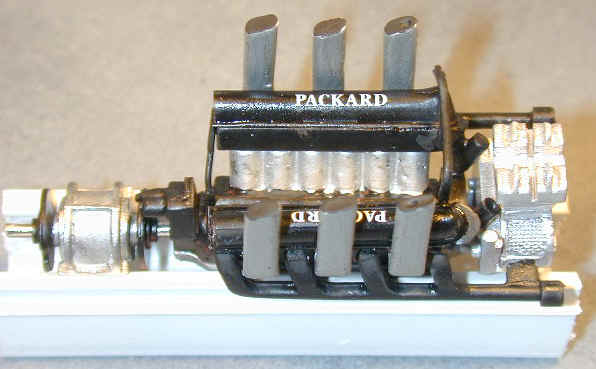|
Ships |
||||||||||||||||||||||||
|
Miss America X by Touchwood Models |
||||||||||||||||||||||||
|
by Peter Radcliffe © 2006 Modeler Site |
||||||||||||||||||||||||
|
Legal Notice No material from Modeler Site any Web site owned, operated, licensed, or controlled by Damian Covalski may be copied, reproduced, republished, uploaded, posted, transmitted, or distributed in any way, except that you may download one copy of the materials on any single computer for your personal, non-commercial home use only, provided you keep intact all copyright and other proprietary notices. Modification of the materials or use of the materials for any other purpose is a violation of Damian Covalski's copyright and other proprietary rights. Read More here > Legal notice I first saw this model at Modelex 2002 and thought "WOW" and this boat really was the inspiration behind this our Marine issue. I must thank Stuart Delf of Touchwood models for providing the revue sample and also for his enthusiasm and response to my comments during the build.
History The last of Garfield Arthur [Gar] Wood's legendary Miss Americas. Powered by 4 Packard V12 2490cu.in. Engines tuned to give 1600hp each. Gar Wood and his faithful mechanic and crew chief Orlin Johnson took Miss America x to the Revier canal of the St. Clair River, Michigan and on 20th September 1932 raised the Water Speed Record to 124.91 mph.
The kit This is the first 1:43rd scale kit from Touchwood previous kits being 1:12th scale. Stuart is still finding his way and there have been changes to the kit since it was first produced. The Main hull and deck are cast by CMA and are superb castings, which require almost no preparation before painting. Replicast casts the smaller resin parts in this kit and they do leave something to be desired as they suffer badly from blowholes and loss of definition. It is to be hoped that in the future CMA will cast all the resin parts as the very few problems I had with building this kit are almost certainly due to the poor quality of the resin castings. That said the resin parts are almost hidden in the depth of the hull but it was frustrating as I could see that the original patterns were obviously of a very high standard. The white metal parts are cast by Mach One models and are relatively problem free.
The instruction are several sheets of clear written instructions with a history of the boat. I always enjoy a brief history of any model as for me it puts a little life into the subject as it comes together. The sound and vibration felt by driver and mechanic must have been awesome. I suspect it would not be allowed in today's health and safety politically correct environment! There is also a sheet showing a drawing of the construction of the engines and a sheet of drawings for positioning of parts in the hull.
Building the kit required I learnt a new skill, wood graining and the instructions printed below and a little practice end with a result that I was very happy with. A colour chip for the brown was provided but as I built the model over the New Year break I was unable to get some paint mixed. I found a darker brown and added a little yellow to my wood-graining pallet, which lightened the overall colour a little. Wood grain effect Spray all "wood" parts with Cellulose or Acrylic paint as pattern; polish as necessary to obtain a smooth finish. Place a small amount of Humbrol Red no.19, Tan no.9 and Brown no.10 on a pallet.
I had to remove a little from the underside of the deck to resolve this. The only other problem I experienced was that the shorter water pipes across the V of the engines did not respond well to bending the metal being a little brittle.
Even nicer is the boat models get a place on display in the lounge unlike the cars which are in the main banished to my studio! The1:12th scale models available from Touchwood are
Bluebird K4 1939 Malcolm Cambell 19th August at Coniston raised the record to 141.74 mph.
Bluebird K7 1967 Donald Cambell as it appeared at on the day of his fatal crash
Bluebird K7 de 1967 Donald Cambell como era el día de su accidente fatal.
K3 and K4 can be built as static models or can be motorised, the kits are a combination of GRP, resin and white metal parts. Support us ordering our notes in PDF > Here |
||||||||||||||||||||||||













































